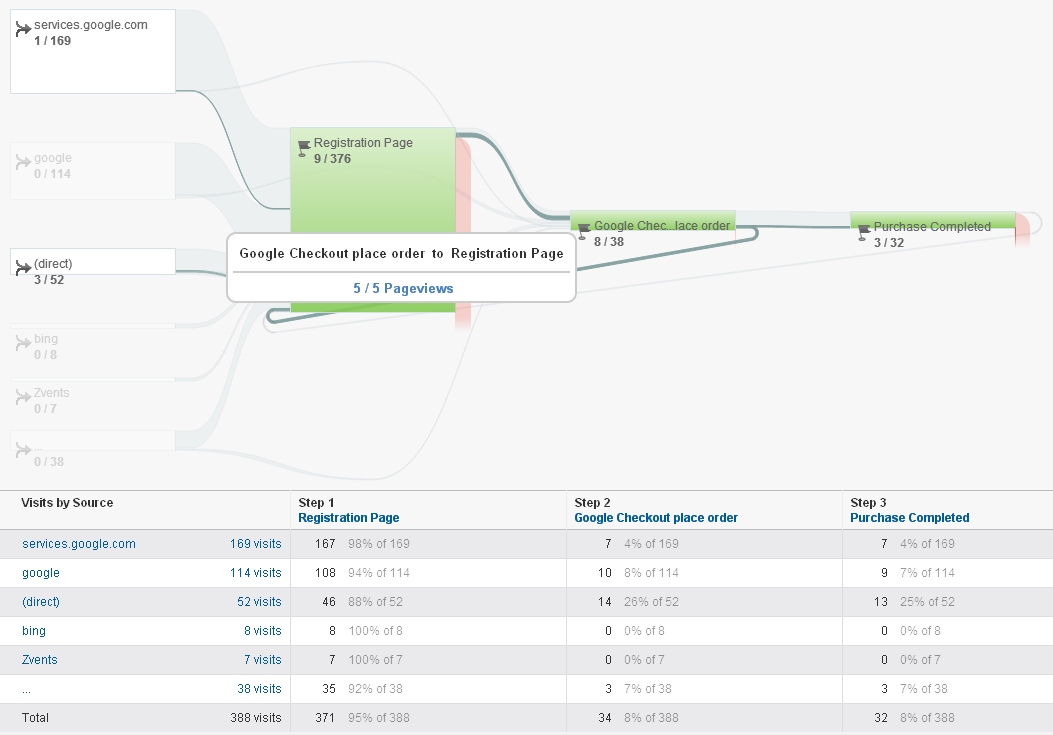What Data Is Google Analytics Goals Unable to Track: A Total Guide
What Data Is Google Analytics Goals Unable to Track: A Total Guide
Blog Article
Discover the Limitations of Google Analytics Goals: Unveiling the Data Kind That Remain Untrackable
As companies progressively depend on data-driven decision-making, understanding the restrictions of tools like Google Analytics becomes extremely important. While Google Analytics Goals deal important insights into customer communications, there exist information kinds that elude monitoring, posing difficulties to a thorough understanding of user behavior.
Incomplete User Journey Tracking
Incomplete individual trip tracking within Google Analytics can impede the capacity to precisely examine user habits. When the customer trip is not completely tracked, there are voids in the data that stop a detailed understanding of exactly how individuals connect with a web site. This lack of understanding can bring about missed opportunities for optimization and renovations to the user experience.
One typical concern with insufficient individual journey tracking is the inability to see the complete path that customers take before finishing an objective or leaving the site. Without this information, it is challenging to determine where customers might be coming across challenges or rubbing factors that prevent them from converting. Additionally, insufficient monitoring can obscure the effect of certain marketing efforts or site changes on user habits.
To address this constraint, it is crucial to establish proper monitoring systems within Google Analytics to catch the entire customer journey. This might involve establishing up event monitoring, goal funnels, or using devices like Google Tag Supervisor to guarantee that no vital communications go unrecorded. By getting a thorough sight of the individual journey, web site owners can make even more informed decisions to enhance customer engagement and drive conversions.
Acknowledgment Difficulties
Navigating through attribution difficulties in Google Analytics calls for a detailed understanding of how various touchpoints contribute to the total conversion process. Attribution obstacles arise from the complexity of modern-day customer journeys, where users communicate with numerous networks prior to converting.
One common acknowledgment difficulty is the difficulty in associating conversions to the appropriate resource, particularly in cases where customers engage with multiple networks before converting. In addition, cross-device tracking positions another acknowledgment challenge, as customers often switch between tools throughout their journey, making it testing to track their interactions effortlessly.
Offline Conversions
Provided the obstacles related to attributing conversions accurately in online networks, the measurement of offline conversions presents a significant opportunity for marketing professionals looking for a more extensive understanding of their customers' trip. Offline conversions describe actions that consumers take in the real world, such as making purchases in brick-and-mortar stores or over the phone, attending occasions, or involving with printed products - what data is google analytics goals unable to track. These conversions are critical for companies that operate both online and offline, as they offer important insights right into the efficiency of advertising campaigns throughout numerous touchpoints
Tracking offline conversions commonly positioned a significant challenge for online marketers, as it was testing to attach these activities back to specific online interactions precisely. With improvements in technology, such as the combination of CRM systems, unique identifiers, and voucher codes, businesses can now link the void in between online and offline information to get a much more all natural sight of consumer habits. By efficiently measuring offline conversions, marketing professionals can enhance their techniques, allocate resources extra successfully, and ultimately enhance the total client experience.
Cross-Device Tracking
Cross-device monitoring plays an essential duty in comprehending the interconnected nature of consumers' electronic communications throughout several devices. In today's omnichannel globe, where users flawlessly switch over between tablets, smartphones, and desktop computers, tracking their habits across these devices is crucial for marketing professionals to obtain a detailed sight of their consumer journey.

Moreover, privacy issues and laws such as GDPR and CCPA have further complex cross-device monitoring. With individuals demanding more control over their data and increased limitations on monitoring modern technologies, marketers must discover privacy-compliant and ingenious methods to link individual communications across tools.
Dynamic Content Involvement
Understanding individual involvement with vibrant material is essential in enhancing electronic marketing strategies for enhanced target market communication. Dynamic material refers to website components that change based upon individual actions, preferences, or other factors, supplying an individualized experience. Tracking individual interactions with dynamic web content postures challenges for conventional analytics pop over to these guys tools like Google Analytics.
While Google Analytics can track fundamental interactions like clicks and web page views, it may have a hard time to capture even more nuanced interactions within vibrant web content. what data is google analytics goals unable to track. Metrics such as time invested on particular vibrant components, float actions, or communications within pop-ups are often not easily measurable making use of common tracking approaches. This restriction hinders online marketers' capacity to totally grasp exactly how customers are engaging with dynamic web content and tailor their approaches appropriately

Conclusion
Finally, Google Analytics objectives have restrictions in tracking insufficient customer trips, associating conversions properly, recording offline conversions, tracking cross-device communications, and measuring dynamic web content engagement. These restrictions highlight the value of exploring additional tracking techniques and devices to gain a more extensive understanding of individual habits and conversions past what Google Analytics can provide.
While Google Analytics Goals offer important insights into customer interactions, there exist information kinds that elude monitoring, positioning challenges to a comprehensive understanding of user actions.Insufficient customer trip monitoring within Google Analytics can prevent the capability to precisely assess customer actions. When the individual journey is not completely tracked, like it there are gaps in the information that prevent a thorough understanding of how users connect with a website.One typical problem with incomplete user trip tracking is the failure to see the full course that individuals take before completing an objective or leaving the website. By getting a comprehensive view of the customer journey, website proprietors can make even more informed choices to improve customer interaction and drive conversions.
Report this page